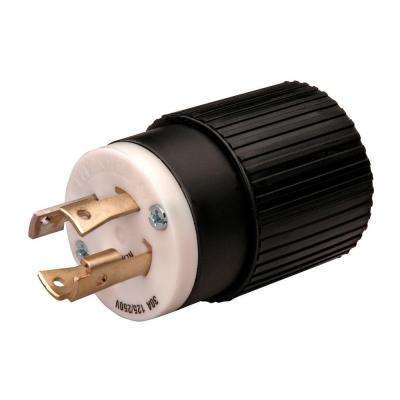
#240 volt plug in install
Image Credit: nnk, Shutterstock How Long Does It Take to Install a 240V Outlet? The only way to know is to ask an electrician for a quote.

Your final estimate could easily be thousands of dollars, depending on the amount of work done. While an outlet itself is pretty simple, you may find that upgrading the electricity in your home is another story. If this is necessary, your costs can easily begin to number in the thousands. Often, this costs upwards of $2,000. Sometimes, your electrician may need to open up walls or counters to move wires around.
#240 volt plug in upgrade
Therefore, you may need to upgrade it to accommodate the new wiring. In some cases, your electrical panel may be unable to accommodate a new 240V outlet. Be sure to add this cost on, as this upgrade is often necessary. Snaking new wire often costs around $500 to $1,300 per project-or about $25 per foot. For instance, most 240V outlet installations will also require laying new wire. However, there are some other factors you may want to consider. Additional Costs to AnticipateĪ basic installation of a 240V outlet will cost $300 and some change.
#240 volt plug in professional
Therefore, you must pay a professional to do it. In many areas, it is illegal to do this type of work without a license. You cannot install the outlet yourself (without experience) since this job includes a lot of electrical work. However, the installation cost will be around $300 or so. Most electricians also have them on hand. You can pick one up at a home improvement store. Obviously, this isn’t terribly expensive. The outlet will often cost you $10 to $20. Therefore, adding a 240V outlet elsewhere will require adding more wires. Usually, the wires in most homes are designed to accommodate 120V outlets unless they are in the kitchen or utility room. A new circuit is often needed on your electrical panel, as well. The main problem with installing a 240V outlet is that new wires usually need to be run. Therefore, it is vital that you have the appropriate number of 240V outlets in your house-you likely won’t be able to rely on 120V alone. With that said, some appliances and tools won’t work unless plugged into a 240V outlet. For instance, ovens give off very little heat when plugged into 120V. However, this is not nearly as efficient. Many of these appliances and tools can use a 120V outlet in some cases. You can also use 240V outlets to charge cars. Many tools need larger outlets, too, like air compressors and welders.

The utility room usually has some for the washer and dryer, as well. However, there are other uses as well. Most kitchens will have 240V outlets for the fridge, oven, and dishwasher.

Most commonly, these outlets are used for appliances. There are many reasons why you may need a 240V outlet. This is not a job that you can simply DIY. In this case, you’ll need to pay an electrician to come in and do the installation. However, you may need to change the location of these outlets or add new ones. Usually, homes come with a variety of 240V outlets. These appliances need more electricity, so their outlet must also be larger. For instance, many larger appliances need a 240V outlet to run properly, including ovens, dryers, and water heaters. You can run most appliances and charge most devices using a 120V outlet. However, there are some cases where you may need a larger outlet.

Luckily, this works for most average outlet purposes. Typically, the average household outlet is only 120V.


 0 kommentar(er)
0 kommentar(er)
